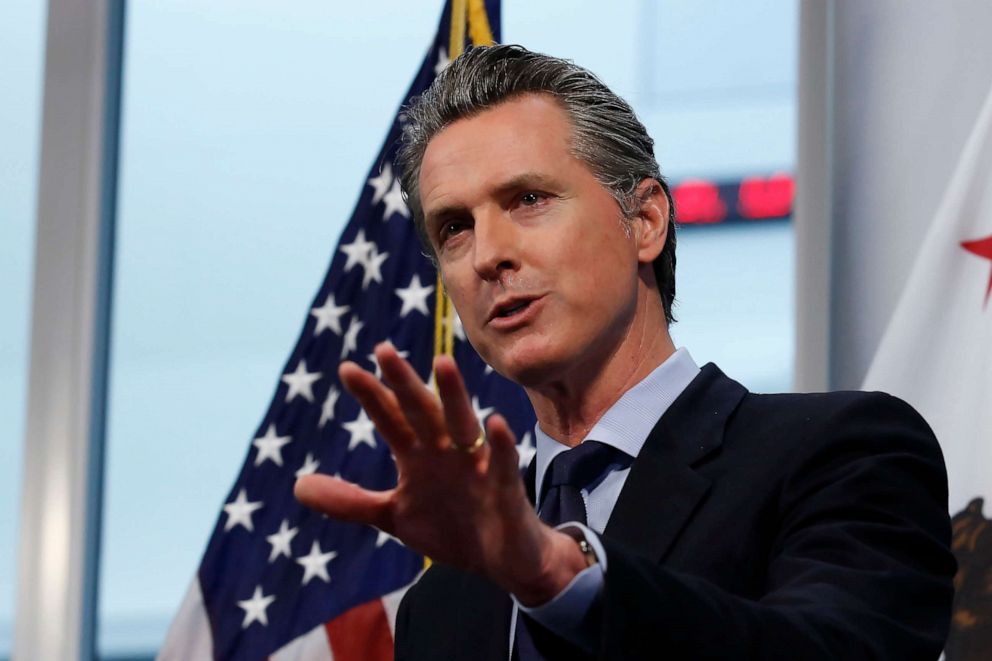COVID-19 complicates transition for foster youth aging out
Aging out under normal circumstances is tough, COVID-19 makes it tougher.
When Rosie Portillo reached her 21st birthday in late April, it wasn’t all a celebration. It came with anxiety about how she would keep a roof over her head and food on her table during the coronavirus pandemic.
Portillo has been in foster care for six years in California, where benefits typically end at age 21. She currently lives in a San Francisco Bay Area apartment subsidized by her foster care benefits and an organization focused on providing affordable housing for foster youth. She stopped working to care for her newborn daughter, Ailani.
“I don't have any other source of income, except from the system,” said Portillo, who lives with just her daughter. “So if that would have stopped, all my bills--they're not turning off the lights but, like, it's accumulating. You know the rent, stuff like that, it's accumulating.”
When California declared a state of emergency and shut down due to COVID-19, Portillo's life was turned upside down.
“Everything stopped, even school and all court sessions where you go in and you talk about your progress,” she told ABC News.
The high school diploma program she was enrolled in shut down without the option of distance learning because there weren’t enough laptops and tablets to go around.
“They were like, If we can’t provide for everyone, we can't give it to you, either,” said Portillo.
The circumstances have made it hard for Portillo to meet the minimum hours of work or school she needs to qualify for assistance to stay in her apartment.
For older foster youth, eligibility for stipends and other benefits are dependent on the ability to work or attend school. During COVID-19-related shutdowns, meeting those basic requirements isn’t always possible, which could lead to a loss of funds and, in turn, housing security.
“The biggest hurdles that we're seeing right now are the people who literally are losing housing during the state of emergency,” said Sixto Cancel, a former foster youth and CEO of Think of Us, a non-profit focused on using technology to improve outcomes for foster children.
Aging out of foster care under normal circumstances is tough. More than 23,000 young people age out of the U.S. foster care system each year and are at increased risk of homelessness. COVID-19 has only complicated things.
In California, Gov. Gavin Newsom issued a directive aimed to help foster youth like Portillo, ensuring that they would be able to receive benefits until the end of June.

Other states -- including Illinois, Michigan and Rhode Island, plus the District of Columbia -- have also taken action to prevent foster youth from aging out during this crisis. But many others haven’t taken such action.
“Your fate is tied to geography,” said Ruth White, executive director of National Center for Housing and Child Welfare.
“Me being in foster care, especially as a young person that has been [in foster care] lifelong, my parent is the government,” said Cancel, 28, who aged out of the foster care after spending most of his life in the system. “And so all of my basic needs are basically met through the government, who is supposed to help me make sure I'm even eating.”
Advocates like Cancel want to see a suspension of work and school requirements to receive benefits, a moratorium placed on discharging older youth from foster care during the pandemic, and six months afterward, expedited re-entry into foster care for youth who have lost their benefits.
White believes the federal statutes that regulate the U.S. Department of Health and Human Services program that supports older foster youth includes a caveat for “medical conditions.”
“It says if a medical condition prevents the young person from meeting these requirements, they're exempt. But it doesn't say that the child has to have a medical condition. It says a medical condition,” said White. “So our interpretation of that is a pandemic is a medical condition that prevents us from going to work or school, so we feel that the federal law already has a workaround.”
While funding comes from the federal program called the John H. Chafee Foster Care Independence Program, the program is run by states and localities. Foster care alumni organizations have been calling on states and local administrators to ensure that foster youth aren’t falling through the cracks in the midst of the pandemic.
In order to keep up with the work requirements to keep her apartment, Portillo told ABC News she plans to start working soon, though she worries about positions that could put her at risk of contracting COVID-19 because she’s an asthmatic.
“Being a youth who does not have anywhere else to go, this is the only smart option I have,” said Portillo.




